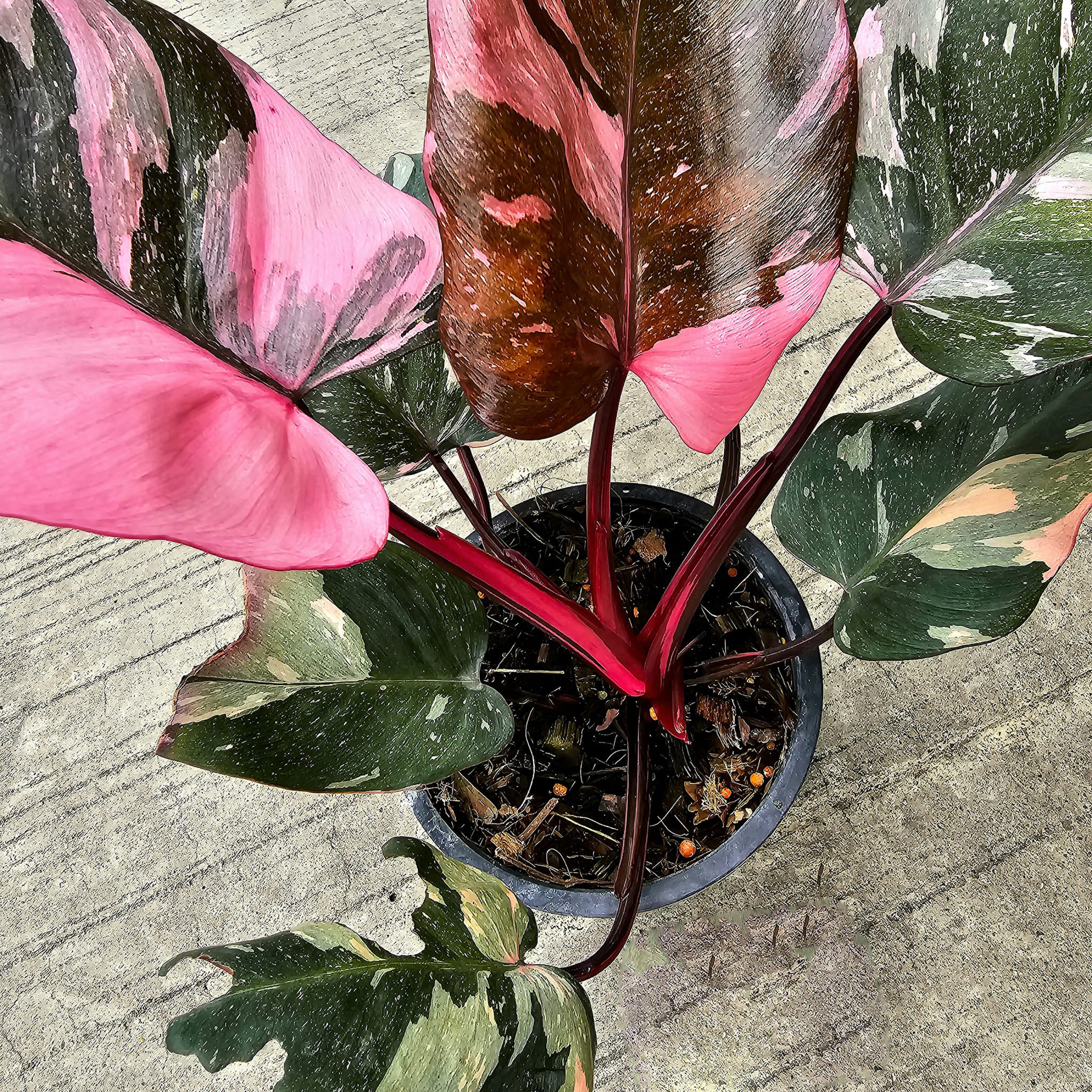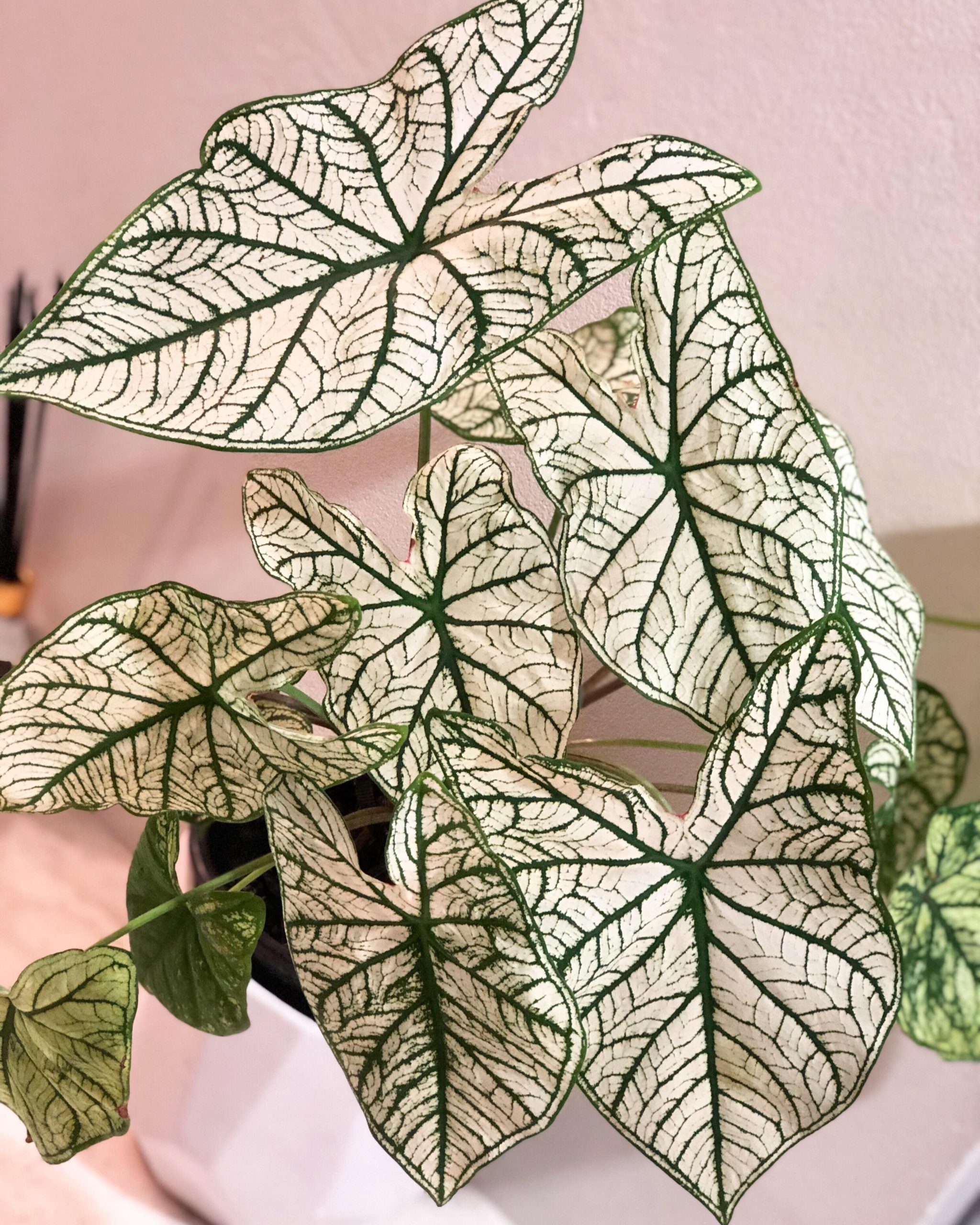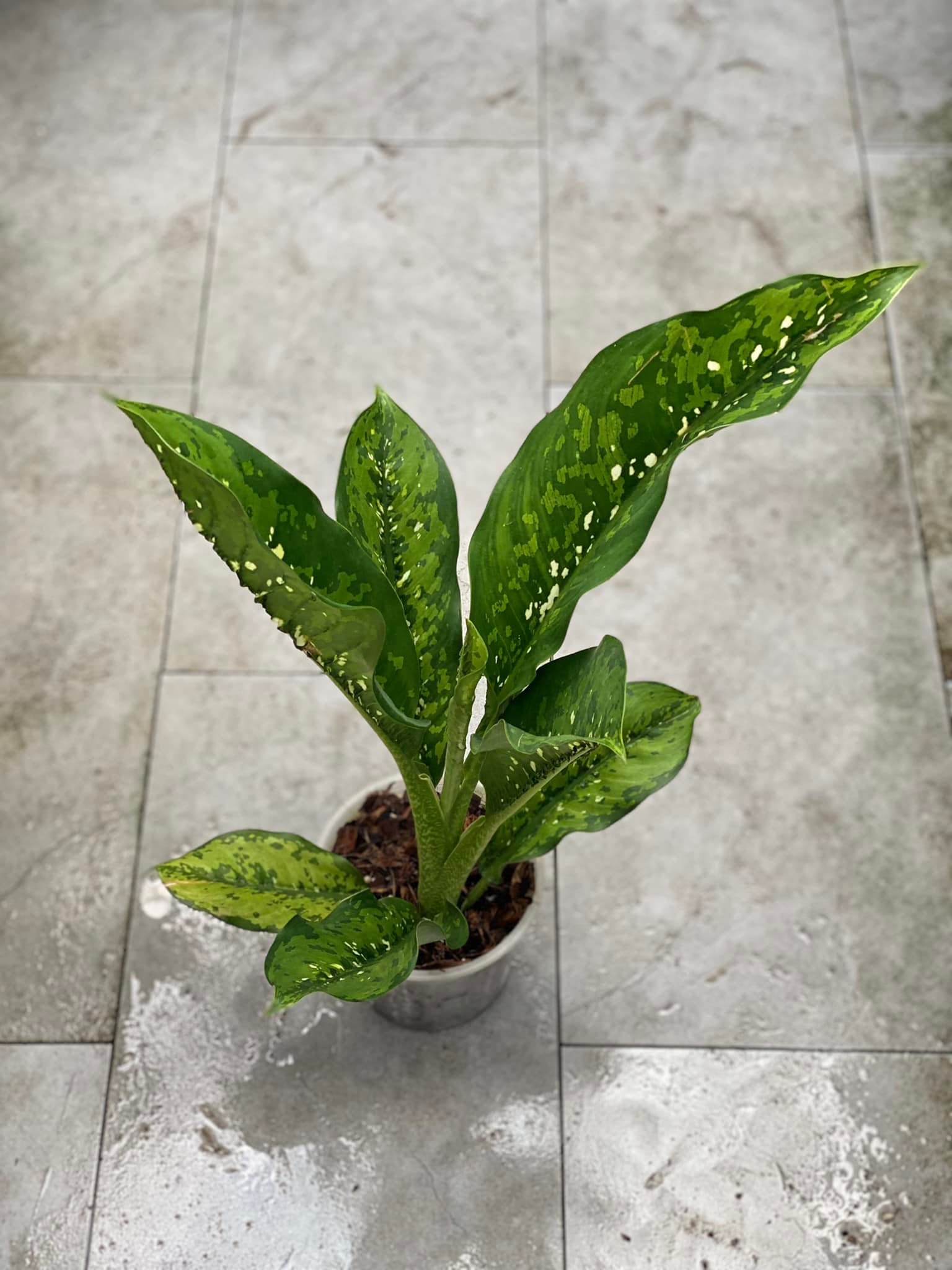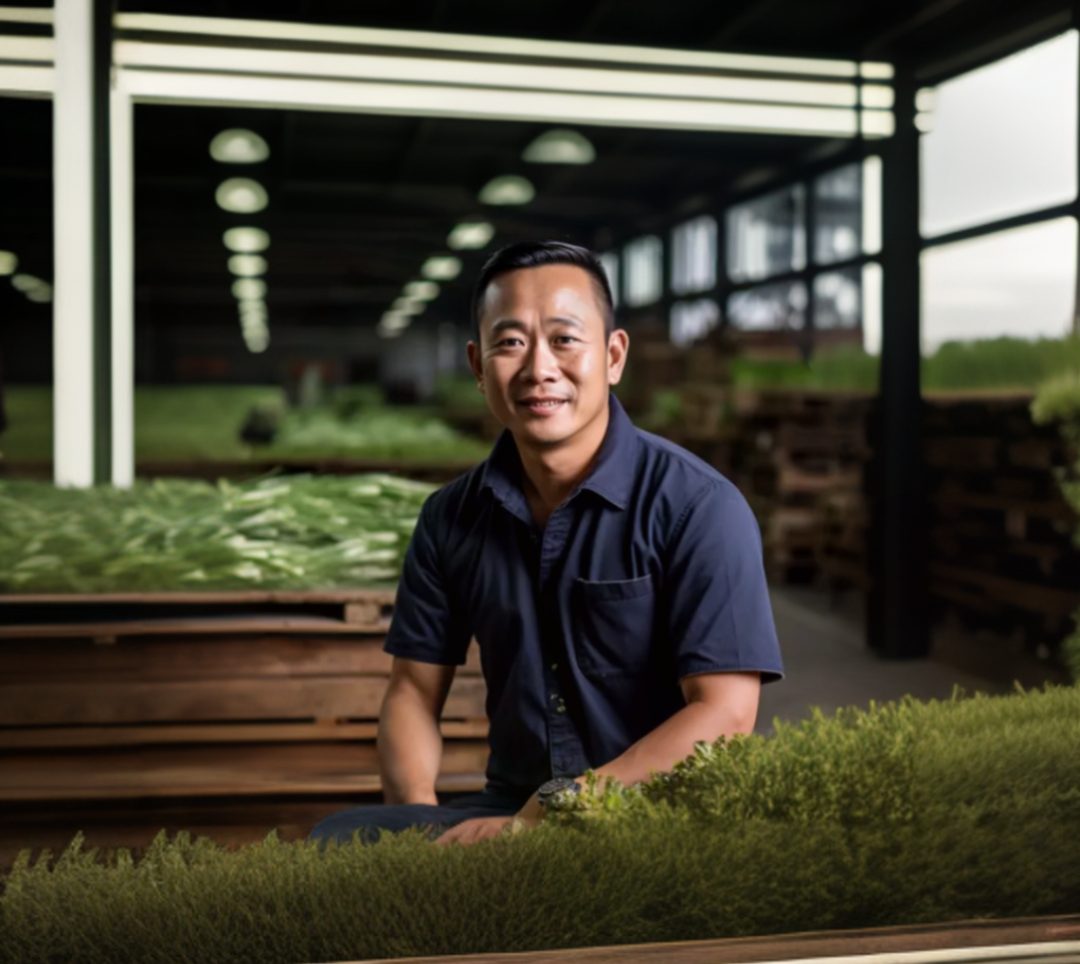The Araceae or arum family is a diverse family of flowering plants consisting of over 3700 species. They are widespread in the tropics and subtropics with centers of diversity in Central and South America and Southeast Asia. Some common examples of Araceae plants include anthuriums, philodendrons, caladiums, dieffenbachia, and many others.
Popular Genera and Species
Anthurium
Anthurium is a large genus of around 1000 species native to tropical America. They are popular foliage plants prized for their long-lasting brightly colored spathes and spadices. Some popular Anthurium species include:
- Anthurium andraeanum – Flamingo flower plant with bright red spathes and spadices. One of the most popular Anthurium houseplants.
- Anthurium crystallinum – Velvet cardboard anthurium with large velvety oval leaves. Grows as an epiphyte in nature.
- Anthurium scherzerianum – Flamingo lily plant with vibrant pink spathes and pale green foliage. One of the original parent species of Anthurium andraeanum.
- Anthurium regale – Royal velvet anthurium with thick velvety circular leaves that can grow over 3 feet wide. Stunning as a foliage plant.
- Anthurium clarinervium – Heart-shaped velvet anthurium with strongly veined foliage featuring white contrasting veins. A highly sought-after species.

Philodendron
Philodendron is another large diverse genus consisting of around 500 species of tropical plants from the Americas. This genus contains many popular houseplants thanks to their adaptability to indoor conditions. Some popular Philodendron species include:
- Philodendron hederaceum – The classic heartleaf philodendron with small deeply lobed leaves. One of the most popular indoor plants for its ease of care.
- Philodendron bipinnatifidum – Tree philodendron that can grow into a large shrub or small tree in the right conditions. Has large deeply divided leaves.
- Philodendron ‘Pink Princess’ – A variegated cultivar with pretty pink and green foliage when given enough light. One of the most coveted philodendron hybrids.
- Philodendron gloriosum – Often called “Velvet leaf philodendron” for its large striking leaves with white contrasting veins. A rare collector’s species.
- Philodendron erubescens – A vining philodendron with large lush green heart-shaped leaves that can grow quite large with support. Sometimes called “Blushing philodendron”.

Caladium
Caladiums are known for their large, paper-thin leaves that display unique color combinations including white, pink, red and green. They are popular seasonal bedding plants and container plants. Some striking Caladium cultivars include:
- Caladium ‘White Queen’ – A mostly white variety with green veining and creamy white leaves. Provides great contrast in shady garden beds.
- Caladium ‘Pink Splash’ – Features bright pink splotches and spots across a background of white and greens. A real eye-catcher.
- Caladium ‘Red Flash’ – A red caladium variety with vivid red veins over white leaves with green margins.
- Caladium ‘Florida Sweetheart’ – Displays both pink and red splotches and spots against creamy white leaves. A popular colorful variety.
- Caladium ‘Candidum Junior’ – A miniature white caladium reaching only 8 inches tall, perfect for borders and containers.

List of the most sought after rare aroids in 2023
Dieffenbachia
Dieffenbachia species are grown as houseplants for their large patterned leaves. The stems contain a toxin that can cause irritation so they are largely just admired for their foliage rather than touched. Some favorite Dieffenbachia cultivars include:
- Dieffenbachia ‘Camille’- Features yellow and green variegated leaves with lighter yellow edges. Grows compactly, making it ideal for desks and shelves.
- Dieffenbachia ‘Marianne’ – Has finely speckled creamy yellow and green leaves. The foliage remains more compact.
- Dieffenbachia ‘Reflector’ – A striking selection with dark green leaves and clearly defined yellow markings following the midrib and veins. Provides nice contrast.
- Dieffenbachia ‘Tropic Snow’- A white and green variegated variety with little to no green in the center of the mature leaves. Stays more compact as well.
- Dieffenbachia ‘Star Bright’- Displays large yellow and white splotched leaves with random green flecks throughout. Is one of the larger growing cultivars.

Cultural Requirements
Many popular Araceae plants share similar care requirements in cultivation since they originate from the shaded understories of tropical forests. Here are some key cultural considerations:
- Light – Most aroids grow best in bright indirect sunlight. Too much direct sun can burn leaves. Low light leads to small leaves. Established plants can handle more sun than younger ones.
- Water – Keep soil consistently moist in the growing season but not waterlogged. Allow more drying between waterings in the winter when growth slows. Take care not to overwater as wet feet promotes root rot.
- Humidity – Araceae plants thrive at 60% humidity or higher. Mist leaves or use a pebble tray to boost moisture around the plant if needed.
- Temperature – They prefer warm temperatures between 65-80F during the day and no cooler than 60F at night. Keep away from drafty areas.
- Soil – Use a rich organic potting mix that retains some moisture but still drains well. Adding perlite, bark, or coco coir helps prevent compaction and waterlogging issues over time.
- Fertilizer – Feed monthly through the growing season with a balanced liquid fertilizer diluted to 1/2 strength. Leach excess salts every few months.
With care given to these factors, many Araceae can be grown successfully indoors as long lived houseplants or seasonally outside in sheltered, warm environments. They may require specific adaptations to local conditions.
Propagation Methods
Members of the Araceae family can be propagated reliably in a few different ways:
Stem Cuttings
Many aroid houseplants such as pothos, heartleaf philodendron and arrowhead vine can be propagated by simply taking a stem cutting with at least 2 leaf nodes and placing it in water until it develops roots before transferring to soil. This is an easy and effective method for increasing stock.
Division
Mature plants including caladiums and elephant ears that form clusters can be divided by carefully breaking or cutting the root ball or rhizome apart into smaller sections, ensuring each division has some roots and growth buds attached. Re-plant immediately afterwards.
Offsets
Certain aroids will naturally form miniature versions of themselves or “plantlets” around the base of the mother plant known as offsets, pups or suckers. Spider plants are particularly known for producing plenty of babies that can simply be detached once they have a few small roots and re-potted.
Tissue Culture / Micropropagation
Many rare, exotic or hybrid aroid species are challenging to propagate reliably by traditional means so commercial growers have turned to lab techniques like plant tissue culture to aseptically generate clean plantlets. This also allows identical copies of plants to be reproduces on a large scale. However, it is an expensive high tech process best left to the professionals.
While some species pose more of a challenge than others, utilizing one or more of these methods allows most aroids to be sustainably propagated at home or on a commercial level.
Major Growing Issues and Solutions
Araceae plants are susceptible to a few common pest and disease issues when conditions are less than ideal:
Mealybugs and Scale Insects
Sap-sucking pests like mealybugs and scale insects can plague many houseplants. They leave sticky honeydew behind which leads to sooty mold growth. Using a cotton swap dipped in alcohol, gently rub off any visible insects. Repeat every few days until under control. Insecticidal soap sprays are also effective treatment options. Ensure plants are not placed in cold drafty areas which stress them into being targeted.
Fungal Leaf Spots
If humidity and moisture levels fluctuate too drastically, annoying black or brown fungal leaf spots often develop on the foliage. Prune off affected leaves promptly, water at the base to avoid splashing water on leaves and space out plants so air circulates freely to reduce disease pressure. Ensure adequate light reaches all leaves as well to discourage fungal colonization. Proper airflow and reduced moisture on leaves controls this issue.
Root Rot
Overwatering is the fastest way to kill almost any aroid. When soil remains soggy for too long, roots begin to suffocate and rot away. Water less frequently, only when the top few inches of soil become dry. Repot plants in an ultra fast draining mix amended with extra perlite or orchid bark. Cut away any mushy black roots before replanting. Allow soil to dry slightly between waterings moving forward.
Keeping up on preventative care is necessary to avoid issues reaching a critical point. Following the optimal care guidelines detailed and acting quickly if problems arise allows most aroid houseplants and seasonal garden plants in this diverse family to remain resilient showpieces for years on end.
Conclusion
In conclusion, the stunning diversity found across the 3700+ species belonging to the Araceae plant family means they have become cherished for seeming endless forms and functions in both interior and exterior garden spaces. From climbing pothos trailing from baskets to stately elephant ears holding court outdoors, aroids offer unique, tropical flair. Understanding what lighting, moisture, soil and other cultural conditions each genus and species prefers along with potential propagation methods and pest solutions ensures their success and longevity in cultivation. With such a wealth of mesmerizing foliage effects, inflorescence displays and now even fragrances to appreciate about this family, all plant lovers are sure to find at least a few aroids to appreciate among their collections, whether lifting the spirits indoors or outdoors.

